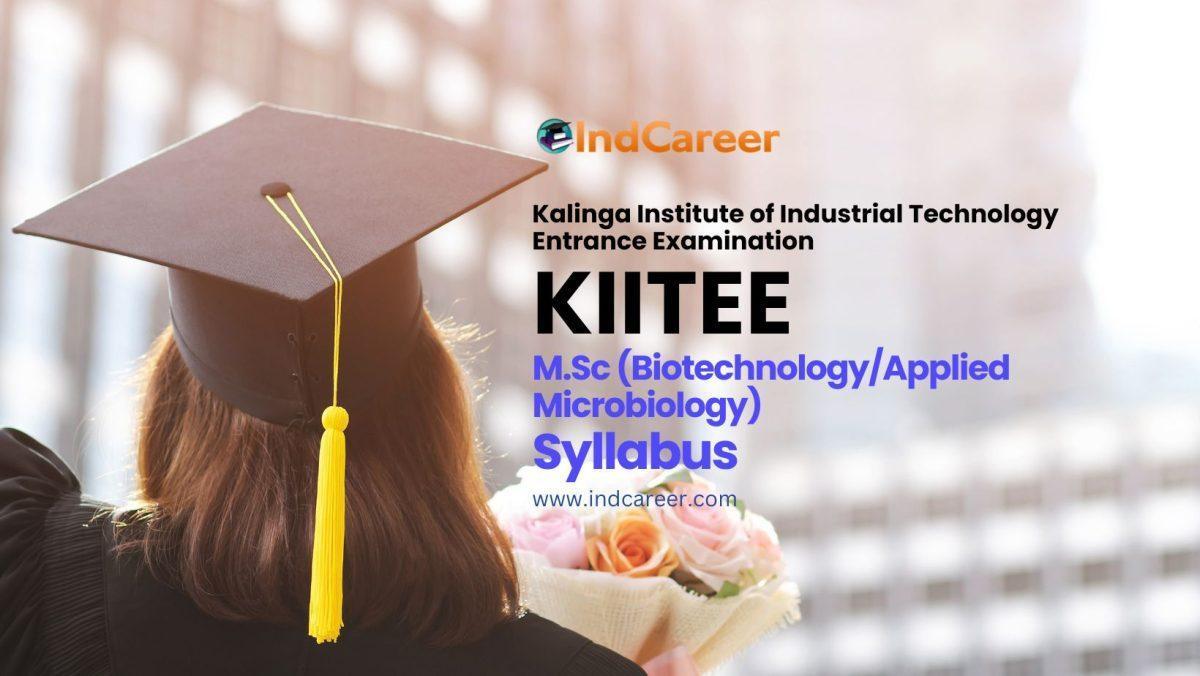Contents
Kalinga Institute of Industrial Technology Entrance Examination (KIITEE) is an entrance exam conducted by Kalinga Institute of Industrial Technology University for admission to professional engineering degree for undergraduate and postgraduate courses.
On this page, you can find the complete syllabus of KIITEE. There 5 different syllabi. Though a single exam is conducted, each course has its own set of syllabi and thus question papers.
This page lists the complete syllabus for admissions to M.Sc (Biotechnology/Applied Microbiology) through KIITEE
Syllabus for M.Sc (Biotechnology/Applied Microbiology) programs
BIOLOGY
Unit 1:- General Biology
Taxonomy; Heredity; Genetic variation; Conservation; Principles of ecology; Evolution; Techniques in modern biology.
Unit 2 :-Biochemistry and Physiology
Carbohydrates; Proteins; Lipids; Nucleic acids; Enzymes; Vitamins; Hormones; Metabolism; Photosynthesis. Nitrogen Fixation, Fertilization and Osmoregulation; Nervous system; Endocrine system; Vascular system; Immune system; Digestive system, Reproductive System.
Unit 3 :-Basic Biotechnology
Tissue culture; Application of enzymes; Antigen-antibody interaction; Antibody production; Diagnostic aids.
Unit 4 :-Molecular Biology
DNA; RNA; Replication; Transcription; Translation; Proteins; Lipids; Membranes; Gene transfer.
Unit 5:-Cell Biology
Cell cycle; Cytoskeletal elements; Mitochondria; Endoplasmic reticulum; chloroplast; Golgi apparatus; Signaling.
Unit 6:-Microbiology
Isolation; Cultivation; Characterization and enumeration of virus; Bacteria; Fungi; Protozoa; Pathogenic micro-organisms.
CHEMISTRY
Unit 1 :-Atomic Structure
Bohr’s theory and Schrodinger wave equation; Periodicity in properties;Chemical bonding; Properties of s, p, d and f lock elements; Complex formation; Coordination compounds; Chemical equilibria; Chemical thermodynamics (first and second law); Chemical kinetics (zero, first, second and third order reactions); Photochemistry; Electrochemistry; Acid-base concepts; Stereochemistry of carbon compounds; Inductive, Electromeric, conjugative effects and resonance.
Unit 2 :-Chemistry of Functional Groups
Hydrocarbons, alkyl halides, alcohols, aldehydes, ketones, carboxylic acids, amines and their derivatives; Aromatic hydrocarbons, halides, nitro and amino compounds, phenols, diazonium salts, carboxylic and sulphonic acids; Mechanism of organic reaction; Soaps and detergents; Synthetic polymers; Biomoleculesaminoacids, proteins, nucleic acids, lipids and carbohydrates (polysaccharides); Instrumental techniques – chromatography (TLC, HPLC), electrophoresis, UV-Vis-IR and NMR spectroscopy, mass spectrometry, etc.
MATHEMATICS
Sets, Relations and Functions, Mathematical Induction, Logarithms, Complex numbers, Linear and Quadratic equations, Sequences and Series, Trigonometry, Cartesian System of Rectangular Coordinates, Straight lines and Family, Circles, Conic Sections, Permutations and Combinations, Binomial Theorem, Exponential and Logarithmic Series, Mathematical Logic, Statistics, Three Dimensional Geometry, Vectors, Stocks, Shares and Debentures, Average and Partition Values, Index numbers, Matrices and Determinants, Boolean Algebra, Probability, Functions, limits and Continuity, Differentiation, Application of Derivatives, Definite and Indefinite Integrals, Differential Equations, Elementary Statics and Dynamics, Partnership, Bill of Exchange, Linear Programming, Annuities, Application of Calculus in Commerce and Economics.
PHYSICS
Physical World and Measurement, Kinematics, Laws of Motion, Work, Energy and Power Electrostatics, Current electricity,Magnetic Effects of Current and Magnetism, Electromagnetic Induction and Alternating current, Electromagnetics waves, Optics, Dual Nature of Matter and Radiations, Atomic Nucleus, Solids and Semiconductor Devices, Principles of Communication, Motion of System of Particles and Rigid Body, Gravitation, Mechanics of Solids and Fluids, Heat and Thermodynamics, Oscillations, Waves.
